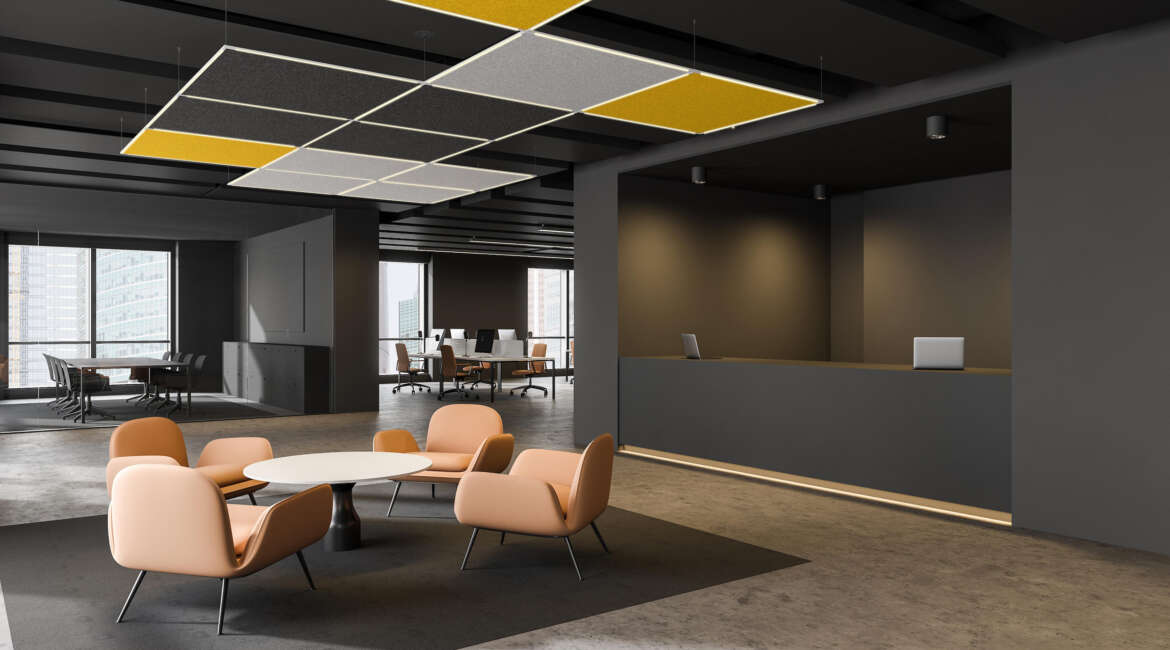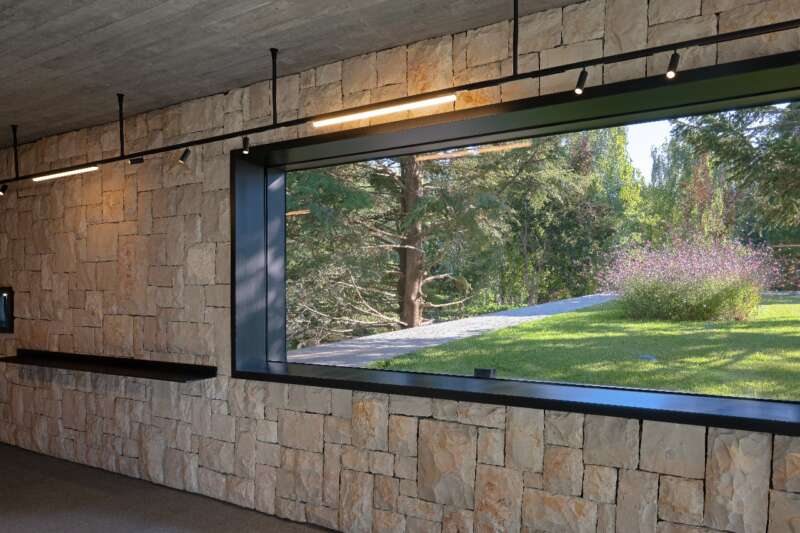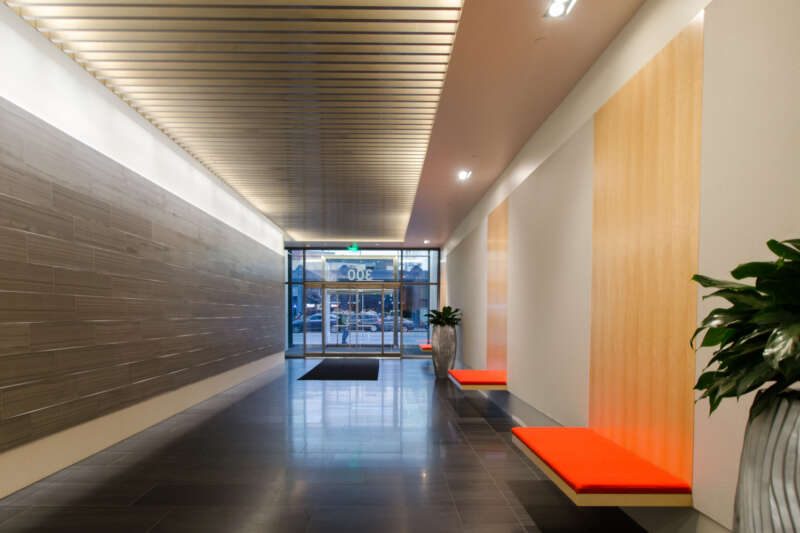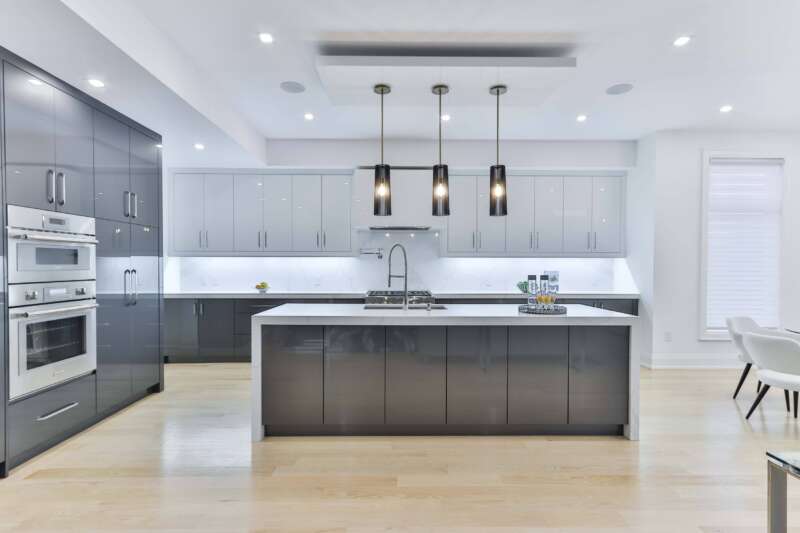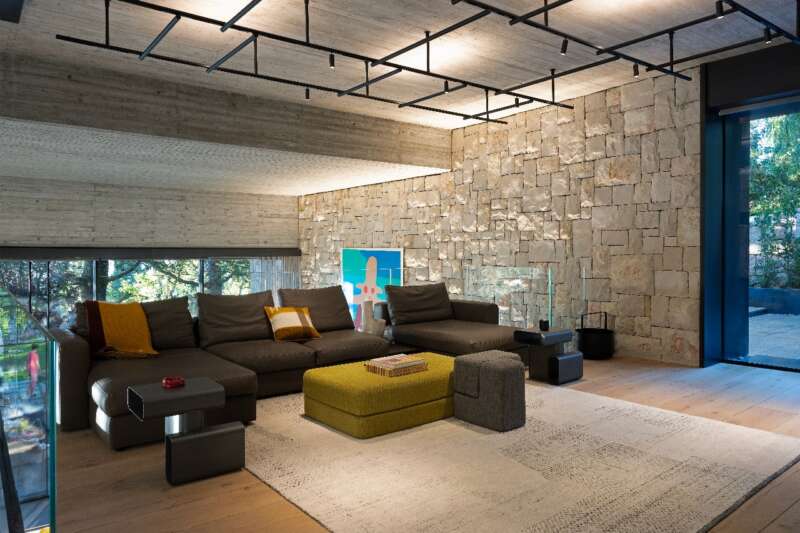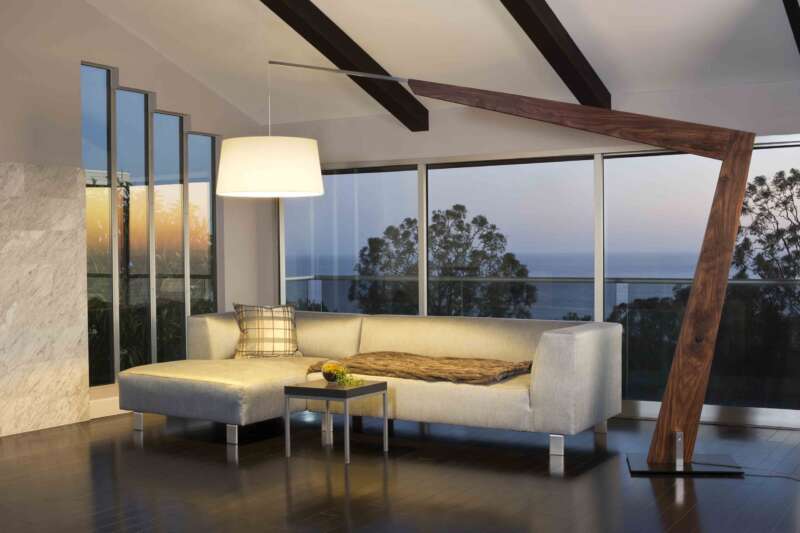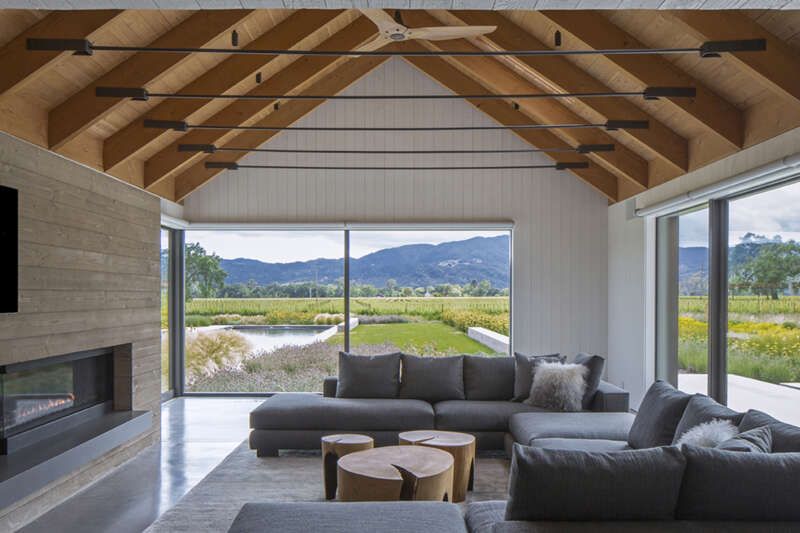Acoustic Ceilings
What is an acoustic ceiling?
A suspended acoustic ceiling is a secondary ceiling, hung below the structural ceiling both to treat room acoustics and to look attractive. Suspended ceilings have the added advantage of hiding the mechanical, electrical, and plumbing installations from view while maintaining some level of access to these utilities.
How do suspended acoustic ceilings affect sound performance?
Suspended acoustic ceilings are installed for a combination of acoustical purposes:
- Sound absorption: Wave energy is taken in when an absorbing material encounters sound; part of the energy is transformed into heat and part of it is transmitted through the material.
- Sound reflection: Wave energy bounces back when it strikes a material; part of the energy bounces back directly and part of it indirectly as reverberation.
- Sound diffusion: Wave energy bounces back evenly in a room. In a perfectly diffusive sound, space reverberation times are the same at any listening position.
What materials are used for suspended acoustic ceilings?
The materials used for suspended acoustic ceilings fall into Five Main Groups:
– Mineral Fiber
– Fiberglass
– Metal
– Wood
– Specialty materials
Mineral fibers: are pretty common for office spaces. They are easily recognizable with the suspended square white panels that usually line cubicle work spaces.
Mineral Fibers typically sell as fissured suspended ceiling tiles. They are the entry-level product in terms of price and performance and remain the most mass-produced type of suspended acoustic ceiling product. They are perfectly suitable for many environments, including offices and retail spaces.
Polyurethane or PVC bagged fiberglass: is sometimes used directly as “faces,” though rarely for public spaces. They are most often placed behind, in the role of absorptive “body.”
Woven fabric is wrapped around rigid fiberglass panels and offers designers a rich color pallet.
Special acoustic plasters are also used to face fiberglass panels. Once installed, the panel edges are filled and coated with acoustic plaster. The effect is a drywall or plaster look, but with acoustic properties.
Metals: used in ceilings are typically aluminum, with a big effort put into recycling. Panned ceilings are made of tin and other alloys.
Wood: gives designers hundreds of species to select from, though less than 100 are used commercially—and of those, less than 20 are used regularly in commercial ceilings.
Specialty Materials: hold their place in both the designer’s and acoustician’s pallet as follows:
a- Cemented wood fiber: Fine wood fibers cemented together into an aerated acoustic pad.
b- Reinforced Gypsum tiles (GFRG): Like wood or metal, the density of Glass Fiber Reinforced Gypsum requires holes to make them.
c- Polyethylene felts: Made from recycled bottles, these plastic felts share the acoustics of fiberglass, and come in a variety of colors.
c- PVC stretch materials: These elastic films stretch across a bay or an entire ceiling. Fiberglass can be placed behind to improve acoustics, or the PVC films can be micro-perforated.
d- Acoustic foams: Made of urethane and melamine plastics, open and closed cell construction provides acoustic different sound attenuation properties. Some can be painted.
What shapes are used by designers?
All these materials can be configured into different SHAPES for a suspended acoustic ceiling, though not in equal degrees. Each material has its own properties that limit how it can be formed. Shapes fall into Five Patterns:
Tiles (horizontally oriented panels)
Linear (horizontally oriented planks)
Grille & Baffle (vertically oriented planks)
Cube (intersecting vertically oriented planks)
Special shapes: Curved (concave and convex), radiused, serpentine, interwoven, pyramid, and 3D forms)
These shapes can all be suspended in the ceiling plane and can serve not just to absorb sound. Some ceiling types can also attenuate sound by diffusing or reflecting it depending on the shape.


